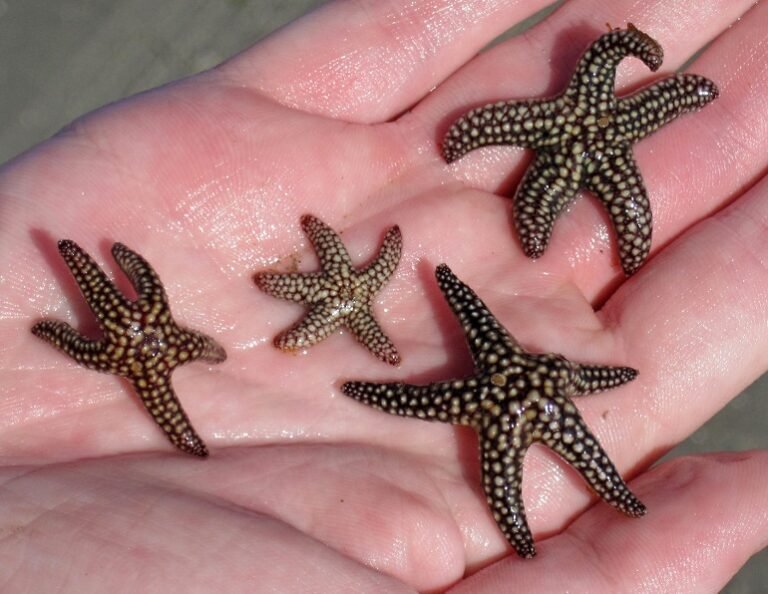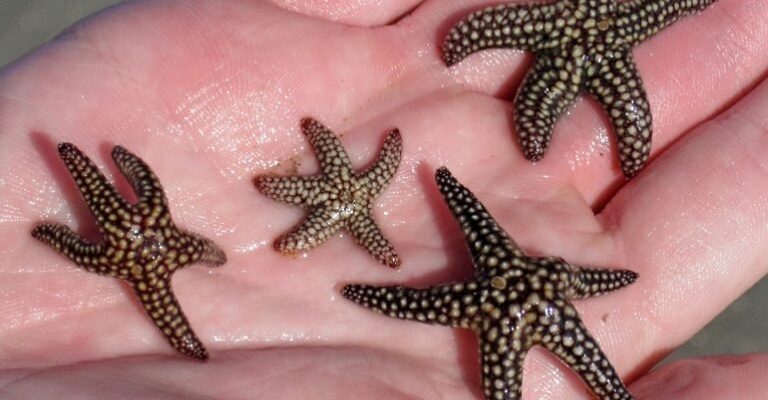
Starfish, or sea stars as they’re sometimes called, belong to the echinoderm family, which also includes sea urchins and sea cucumbers. With around 2,000 species, these creatures sport a variety of vibrant colors and shapes. One of the most remarkable aspects of starfish is their ability to regenerate lost arms, which plays a crucial part in their reproduction. Let’s dive into the various ways starfish reproduce and what their breeding habits reveal about their survival in the ocean.
Different Methods of Reproduction
Starfish primarily reproduce through two main methods: sexual and asexual reproduction. Each method serves different purposes in the starfish life cycle.
Sexual Reproduction
During sexual reproduction, starfish engage in a process called external fertilization. This means that males and females release their sperm and eggs directly into the water, where fertilization occurs. Sounds a bit chaotic, right? But this method is quite efficient. Each female can release thousands of eggs at once, increasing the chances of successful fertilization.
To help visualize this, think of a starfish as a gardener scattering seeds. Each egg represents a potential new starfish, floating in the ocean’s embrace, waiting for the right conditions to flourish into a new life. Fertilized eggs develop into larval forms that drift through the water before settling to the ocean floor.
Asexual Reproduction
In contrast, asexual reproduction is like cloning. Some starfish can reproduce by regeneration, where they can grow an entirely new individual from a lost arm. Typically, if a starfish loses an arm to a predator, it can regenerate that limb and, in some cases, the lost arm can grow into a new starfish if it has a portion of the central disc attached.
This incredible ability is nature’s way of ensuring survival. Imagine losing a finger, but it grew back as a whole new you! This regeneration process takes time, but it allows starfish populations to recover quickly from injuries and potential threats.
The Role of Temperature and Environment
You might be wondering how environmental factors influence starfish reproduction. The temperature of the water plays a significant role. Most starfish species prefer warmer waters, which boost their reproductive cycles. Warmer temperatures trigger the breeding season, encouraging starfish to release their gametes.
Moreover, factors like salinity and the availability of food also contribute to successful reproduction. Think about it: if the ocean is rich and vibrant, starfish can thrive, multiply, and maintain their populations. In stressed environments, like polluted waters, starfish might struggle to reproduce effectively. This interplay between conditions and reproduction showcases the fragility and resilience of marine ecosystems.
Starfish Lifespan and Maturity
Starfish have varied lifespans and maturity rates depending on their species. Some may live for just a few years, while others can reach ages of over 30 years. Generally, most starfish reach sexual maturity between one and two years of age.
This timeline is crucial. The earlier a starfish can reproduce, the better its chances of passing on genes to the next generation. Imagine it like a race: the faster you reach the finish line (in this case, maturity), the more likely you are to contribute to future generations.
Hatching from eggs, the larva goes through various stages before settling down, eventually becoming a free-swimming adult. This metamorphosis is a fascinating journey, showcasing the transformation from a tiny larva to a fully-formed star.
Impact of Predators on Starfish Reproduction
Predators can have a significant effect on starfish populations and their reproductive success. Starfish are prey for several marine animals, including fish, crabs, and even other starfish. Predation pressure can lead to the need for starfish to adapt their reproductive strategies.
For instance, in areas where predation is high, starfish might reproduce more frequently through asexual methods, ensuring that even if some individuals are consumed, the species can still thrive. It’s like a backup plan—when the usual route seems risky, they fall back on their ability to regenerate and keep the lineage alive.
Conservation and Starfish Reproduction
As we learn more about the breeding and reproduction of starfish, it becomes clear that conservation efforts are essential. Many starfish populations are declining due to overfishing, habitat destruction, and climate change impacts. Protecting their habitats is crucial for maintaining their reproductive health.
Conservationists advocate for sustainable practices and marine protected areas to safeguard these unique creatures. By restoring their ecosystems, we ensure that starfish can continue to reproduce and thrive. It’s all connected—healthy oceans lead to healthier starfish populations, which in turn help maintain the balance of marine life.
Understanding the breeding and reproduction of starfish opens a fascinating window into their lives. From their spectacular regeneration abilities to their unique reproductive strategies, starfish are more than just pretty ocean dwellers; they play vital roles in marine ecosystems.
As we face challenges like climate change and habitat loss, protecting these remarkable creatures becomes ever more essential. The next time you stroll along the beach or dive into the ocean, take a moment to appreciate the starfish and their extraordinary life cycles. They’re not just another part of the scenery—they’re resounding examples of resilience and adaptability in our oceans.

